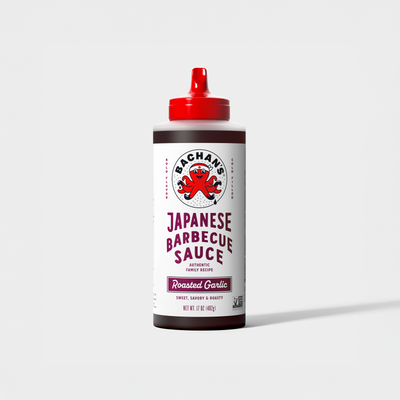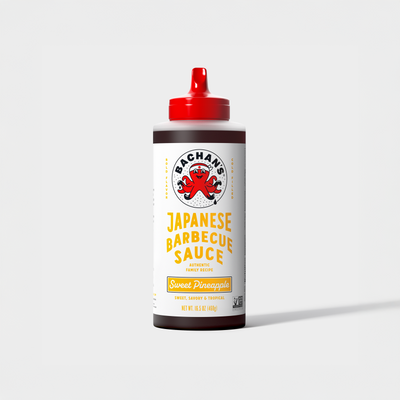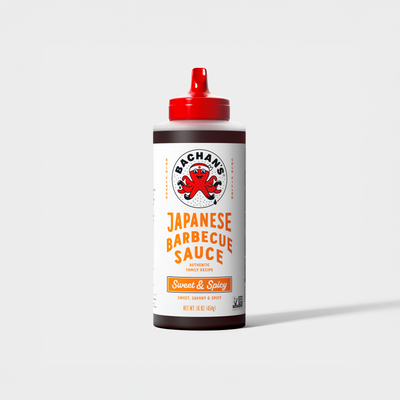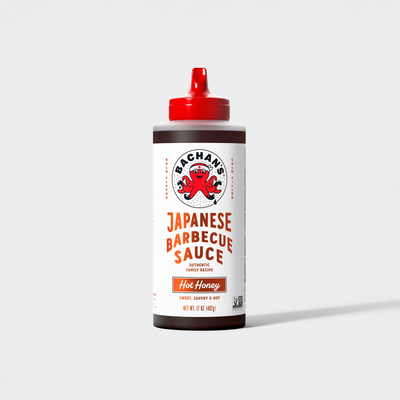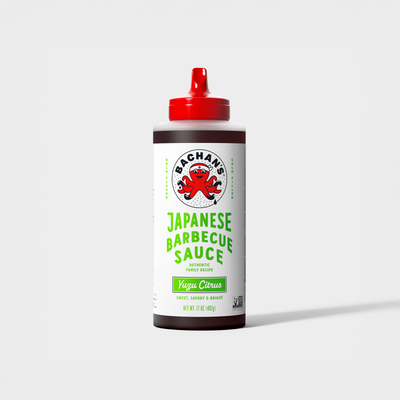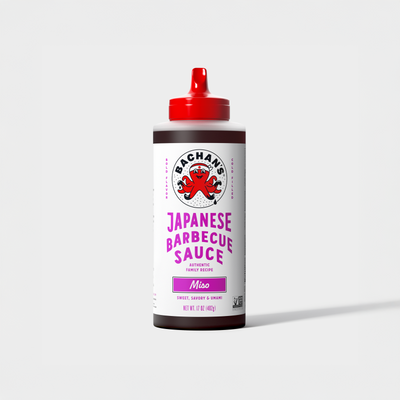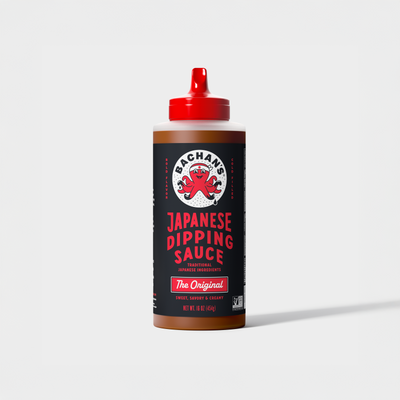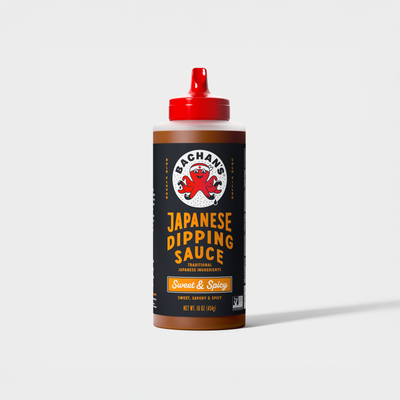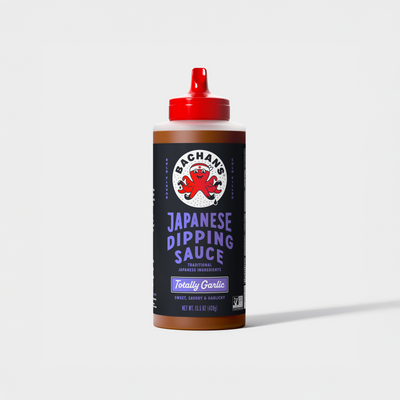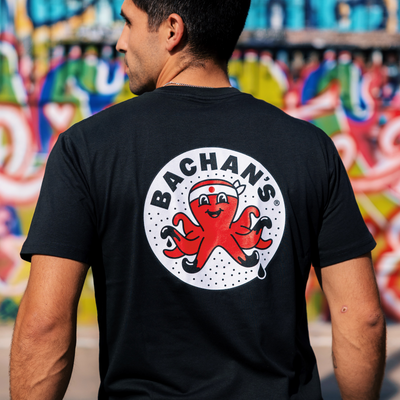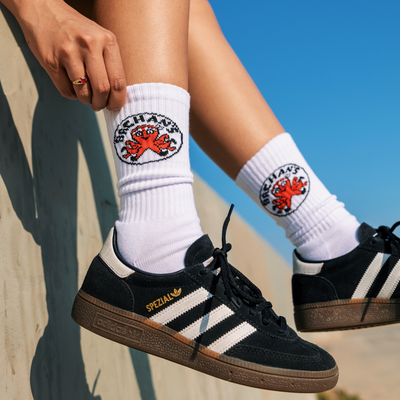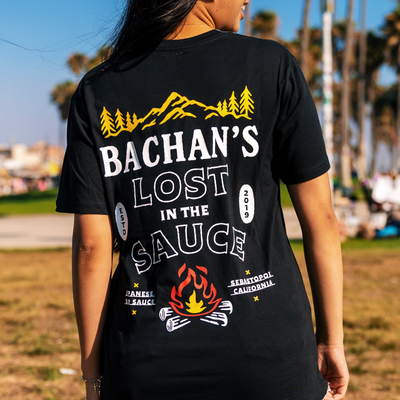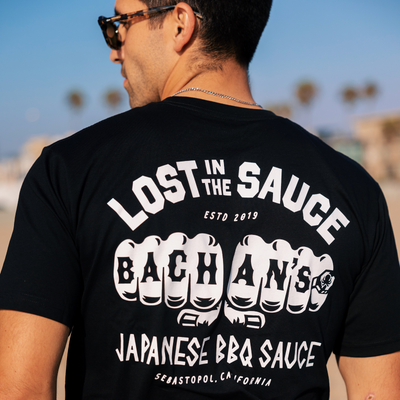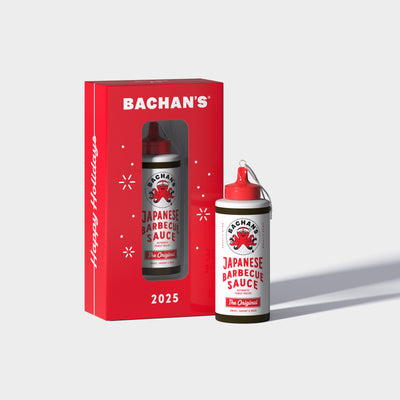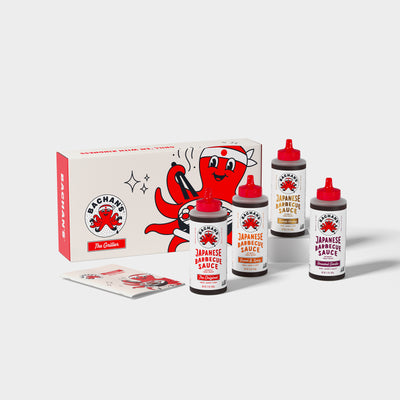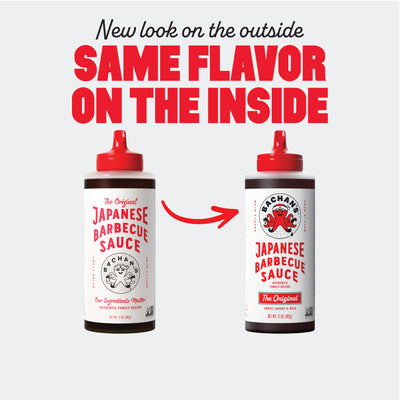Posted by Ecomm Admin on
Bachan's Marinated Ribeye
- Cook Time: 1 Hour
- Serves: 2
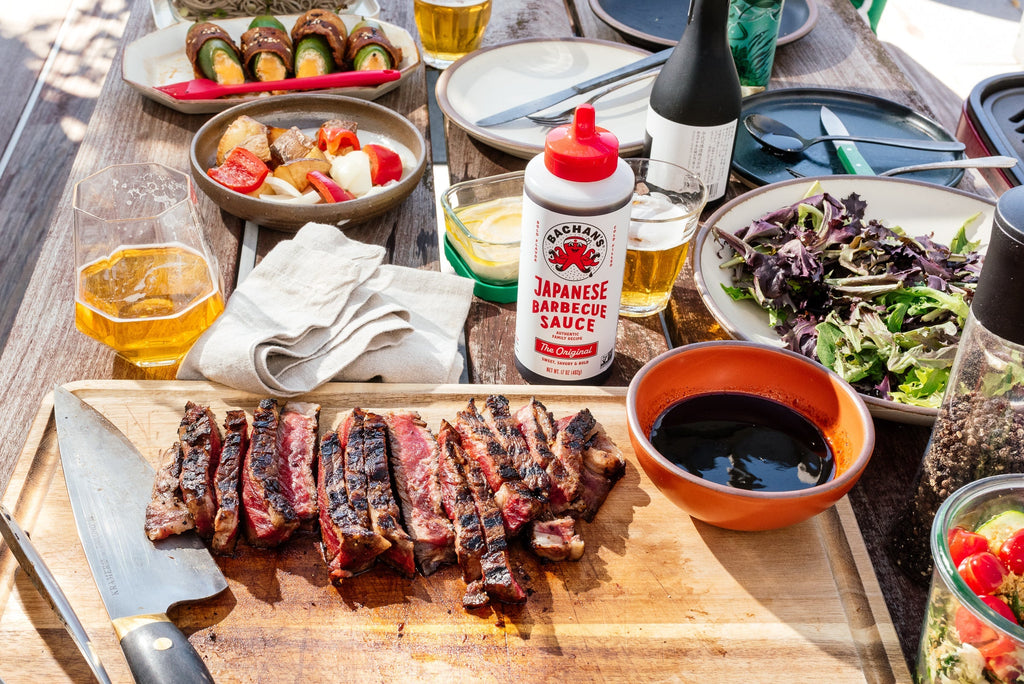
Bachan's Marinated Ribeye
Steak is one of those things that you either believe is best done at a steakhouse or right at home. A charred crust giving way to a juicy, tender, rosy-red center is the sign of a perfect steak. You just know you’re in for a treat. The difference is mostly only in the seasoning and cooking process.
A great steak is a thing of beauty and if you’re looking for a steak that’s perfectly cooked and seasoned, keep reading to learn how to make a reverse-seared steak served with Bachan’s Japanese Barbecue Sauce that may be the best steak you’ll ever cook for yourself.
If it’s your first time making steak
If you’re not familiar with making steak, the first thing you need to do is go buy steaks (more on that below). The second, optional, but highly recommended thing to do is buy a digital read thermometer. The thermometer will let you know what temperature your steak is inside, giving you a tool to know exactly when your steak is cooked to your liking.
How to choose a good steak
There are so many kinds of steak out there and it can be overwhelming if you’re not familiar with meat. No matter which type you buy, you should be looking for steaks that are at least 1 inch thick, red, slightly moist, and cold and firm to the touch. There should be marbling -thin white lines running through the steak - which is what provides flavor and tenderness.
The USDA has a handy grade chart that should help you decide. USDA Prime is the highest aka most expensive and USDA Choice is the grade below prime and what you’ll typically find in many grocery stores.
Here is a starter cheat sheet of steaks. If you value:
Extra tender steaks: tenderloin, filet mignon, top loin
Steaks that sear well: top sirloin, tri-tip, t-bone, ribeye, strip, chuck top blade, prime rib
Steaks for a special occasion: bone-in ribeye, porterhouse, bone-in prime rib
What is reverse searing?
No matter which steak you choose, reverse-searing steak is the way to go. It’s essentially foolproof. Reverse searing is cooking steak low and slow to get the steak up to your desired temperature then finishing it by searing or grilling for a classic burnished steak crust. A low oven is your friend. It’s kind of like a dry sous vide where our goal is to bring the steak to a temperature and hold it there without overcooking.
Why reverse sear?
Most home cooks tend to cook steak on the grill or stovetop. This is a perfectly good way to cook steak if you’ve made a lot of steaks and are an expert in timing. If you aren’t, using a low oven to give you control over the doneness of the steak prevents accidental over or undercooking and gives you an even doneness throughout. Cooking the steak in a low oven also has the benefit of slightly dehydrating the surface of the steak, prepping it for the on-the-stove sear. The dryness of the surface means the pan-sear will be even more effective, creating a crunchy crust.
How to reverse sear a steak
Set the oven - set your oven as low as it can go, usually, this is 200°F. As the oven gets up to temp, lightly pat your chosen steak dry and season both sides with salt and freshly ground pepper.
Cook - arrange the seasoned steaks on a wire rack inside a rimmed baking tray. Place in the oven and cook for 40 minutes or until the internal temperature reaches your desired doneness based on the chart below. To do this, use an oven-safe instant-read thermometer.
Make a sauce - while the steak is cooking, whisk up a quick chimichurri. Mix Bachan’s Japanese Barbecue Sauce, chopped cilantro, minced garlic, toasted sesame oil, and rice vinegar in a small bowl. Set aside to let the flavors melt.
Sear - When the steak is cooked to your desired doneness, remove it from the oven. Heat a generous amount of high-heat oil in a large cast iron skillet over high heat. When the oil is hot and shimmery, carefully add the cooked steak and sear until the steak gets a golden brown crust, about 1 minute per side, flipping as needed.
Slice - Remove the steak from the pan and let it rest, searing any additional steaks as needed. Slice against the grain and plate, topping with the chimichurri.
Enjoy - Enjoy and never go to a steakhouse again!
How to cook a steak to the right doneness
The only surefire way to know how cooked a steak is is to use a thermometer. There are various digital read thermometers out there with a wide range of prices. All you need is one that has a probe with a wire. You push the probe into the steak, set the temperature to your desired steak doneness, and then just let the oven do its thing. When the inside of the steak is at the right temperature, the thermometer will beep at you and then it’s time to take the steak out of the oven and finish it on the stovetop for a good sear and crust.
Steak doneness temps
Rare 120°F: soft and tender with a cool to warm red center
Medium Rare 130°F: most common steak texture with a warm red center
Medium 140°F: slightly firm with a hot pink center
Medium Well 150°F: mostly brown with a very light pink center, very firm
Well Done 160°F +: brown throughout, firm, tough, and dry
Does the doneness of steak affect how it tastes?
Generally, the more rare a steak, the more tender it will be, but there are caveats. In large part it depends on what kind of steak you’re buying. Typically, steaks with more marbling - that is fat streaked throughout - need more time/doneness so the fat has a chance to render and melt.
Very lean steaks such as sirloin, tenderloin, or filet mignon are naturally very tender and low in fat, meaning they do well at rare or blue temperatures. Rare steaks tend to be a melt-in-your-mouth affair.
Medium-rare steaks are steaks that need a bit more time to cook because they have more muscle and marbling. Steaks like ribeye, strip, and flank should be cooked to at least a medium rare and will be hearty and extra beefy tasting with a pleasant chew.
Steak sauce
Everyone knows about steak sauce, but really, you haven’t lived until you’ve had a perfectly cooked piece of steak dipped in Bachan’s Japanese Barbecue Sauce. Although Bachan’s is a barbecue sauce it’s actually based in part on the sauce you get from a yakiniku, or Japanese barbeque.
The depth of Japanese naturally brewed soy sauce, mellow sweetness of aged Japanese mirin, slight tang of organic rice vinegar, and fresh green onion, ginger, and garlic all play perfectly with the juicy burst of seared meat. Try your steak with Bachan’s Japanese Barbecue Sauce on its own, then make a Bachan’s chimichurri to change the taste mid-meal, as the Japanese love to do.
Itadakimasu!
Directions
ingredients
2 tbsp Bachan's Original Japanese Barbecue Sauce
2 steaks of choice
1/4 cup chopped cilantro
2 cloves garlic, crushed
2 tsp toasted sesame oil
1 tsp rice vinegar
Prep Time: 5 Minutes
Cook Time: 1 Hour
Serves: 2


